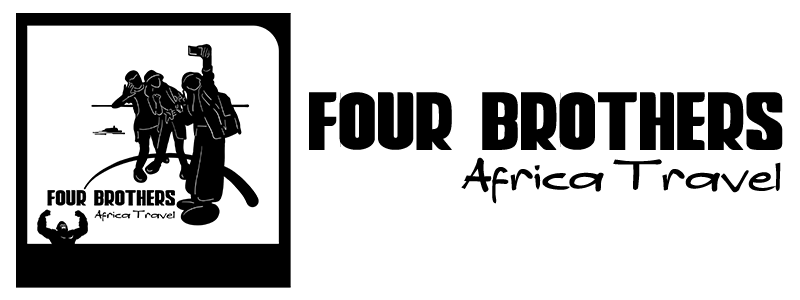Best time to visit Rumanyika-Karagwe National Park
Rumanyika-Karagwe National Park is best visited during: The Kagera region is home to Rumanyika-Karagwe National Park, which is situated in northwest Tanzania, adjacent to the Lake Victoria zone. The Karagwe region is a great place for game hunting, historical investigation, archeological endeavors, wildlife photographic safaris, and cultural tourism since it offers a wide variety of flora, fauna, rocks, landscape, and topography. Previously a Game Reserve covering 800 square kilometers, Rumanyika-Karagwe National Park was formally recognized as a National Park in July 2019. Although its area has shrunk to 247 square kilometers due to human encroachment over time, it nevertheless has a lot of promise for photographic tourism and maintains its natural beauty. A deep valley with a meandering river is the park’s main feature.
at its base, creating swamps and lakes. The higher slopes of the valley are typified by Acacia tall grass woodlands, which are maintained comparatively open by seasonal fires, while the lower slopes are heavily forested and covered with thick shrubs.
The ideal time of year to visit Rumanyika-Karagwe National Park is one of the most crucial considerations when making travel plans. The park has a clear rainy and dry season, which can significantly affect your experience, just like other places in East Africa. Rainfall in the national park ranges from 729 to 995 millimeters per year. In other words, January and February have little or no precipitation. March through May and September through December saw the most rainfall, with June through September seeing the least amount. The best time to visit Rumanyika-Karagwe National Park is during the dry season, which spans from June to July. The mean maximum and minimum temperatures range from 26.2 to 13.7 degrees Celsius, respectively. to September. During this time, the weather is minimal and the wildlife viewing is at its best. The lack of rain means that animals are more likely to gather around the watering holes, making it easier for visitors to spot them. Because the park’s tourism season falls during the dry season, it is crucial to reserve your lodging and safari tours well in advance to guarantee availability. The park may have more lush greenery, blooming flowers, and less visitors if you choose to visit during the wet season, which spans from October to May. Rain can, however, make driving challenging and make it more difficult to see certain animals as they scatter in search of water. No matter when you decide to visit Rumanyika-Karagwe National Park, you will undoubtedly have a memorable time. There is something for every kind of traveler in this park, from leisurely boat rides on Lake Karagwe to thrilling safari drives.
Activities to do while traveling to Rumanyika-Karagwe National Park
Go on a game drive: This is one of the greatest ways to experience the parks. Numerous animals, like as elephants, giraffes, lions, leopards, zebras, impalas, and more, can be found in the park. You will be able to see these amazing creatures in their natural environment and get knowledge of their habits from knowledgeable guides during your guided game drives through the park.
With more than 300 different species of birds calling Rumanyika-Karagwe National Park home, it is a sanctuary for bird enthusiasts. On your birdwatching excursion, you will also get the opportunity to see a number of stunning bird species, including the African jacana, grey-crowned crane, malachite kingfisher, African fish eagle, and tiny
Among them are the pied kingfisher, grey heron, African openbill, yellow-billed stork, grebe, and marabou stork.
Boat safaris: Lake Rumanyika, one of the region’s primary attractions, inspired the park’s name. While on a Tanzania safari in the park, visitors can take a boat safari on the lake to take in its pristine waters, verdant surroundings, and breathtaking views of the surrounding area. During the cruise, you might be able to see crocodiles, hippos, and other bird species along the lake’s shores.
Nature hikes and trekking: Put on hiking boots and explore the park’s paths on foot. You may fully appreciate the splendor of the natural surrounds by going on guided nature walks across the broad plains, rolling hills, and dense forest. Watch for wildlife and take in the park’s serene atmosphere.
Cultural tours: Rumanyika-Karagwe National Park is home to a wealth of cultural legacy in addition to being a wildlife sanctuary. In the park, cultural trips entail touring nearby towns, getting to know the amiable locals, and discovering their customs and way of life. You will have the opportunity to take part in a variety of cultural activities throughout the year, including traditional cuisine, dance, and drumming.
Camping: Think about setting up tent in the park for a genuinely natural experience. You can pitch your tent at a designated campsite and enjoy the sounds of the nature while sitting beneath the stars. In Rumanyika-Karagwe National Park, have a fantastic evening with your fellow campers by roasting marshmallows, enjoying a bonfire, and exchanging stories.
Photography: Photographers will find nirvana in Rumanyika-Karagwe National Park, with its stunning scenery, varied fauna, and lively culture. Taking candid photos of locals, close-ups of wildlife in action, and breathtaking sunsets over Lake Rumanyika can help you remember your vacation for a long time.
Things to bring to Rumanyika-Karagwe National Park for a safari
Long sleeves and collars on t-shirts, shirts, and blouses assist shield wearers from the sun and mosquitoes.
The warm jacket or fleece
A pair of safari pants, especially the ones that zip off at the knees, are also incredibly practical.
Socks and comfortable walking shoes (or boots)
A cotton scarf or bandanna, a sarong (kanga, pareo, or kikoi), and perhaps a pair of open sports sandals for everyday wear during the warmer months
Wear a swimsuit because many lodges and campers have pools.
Binoculars and a camera are used to record and identify wildlife.

